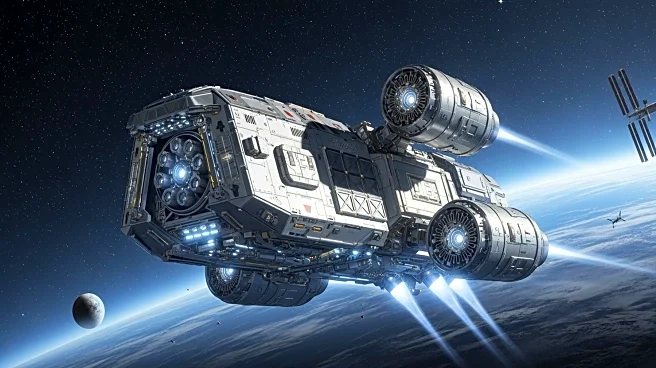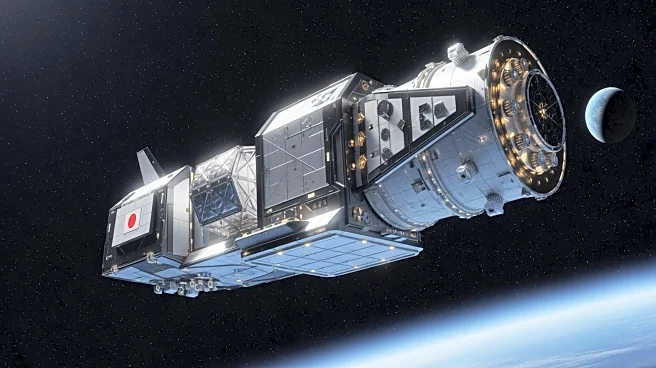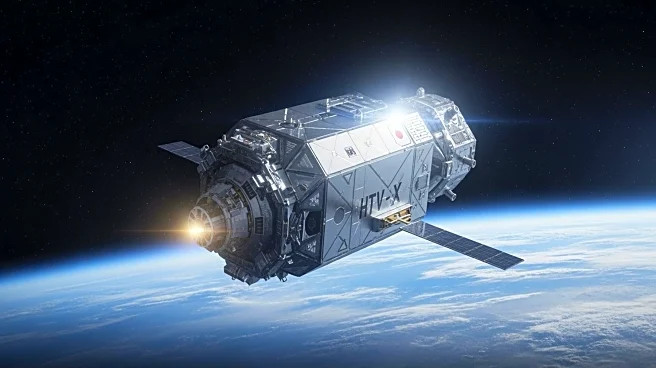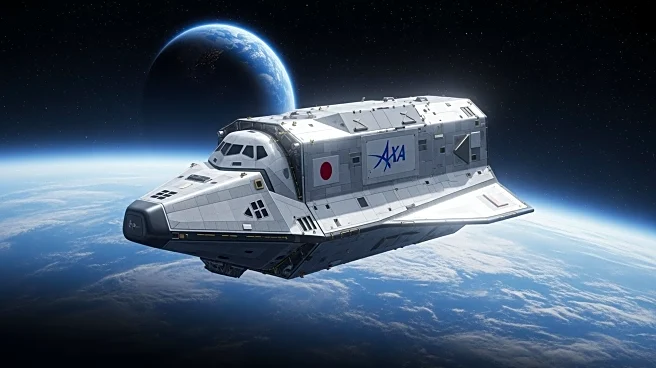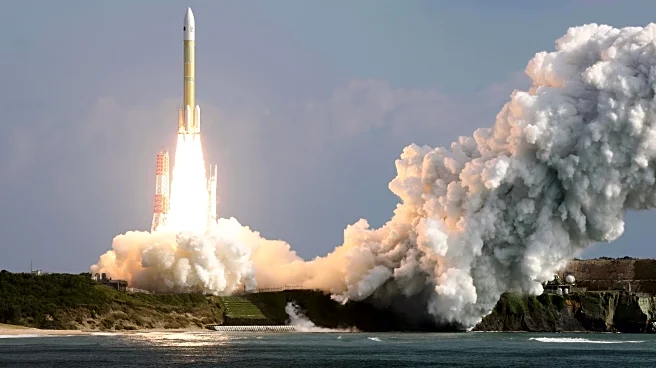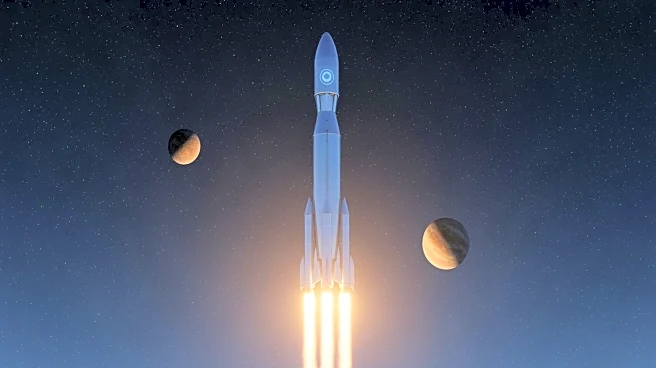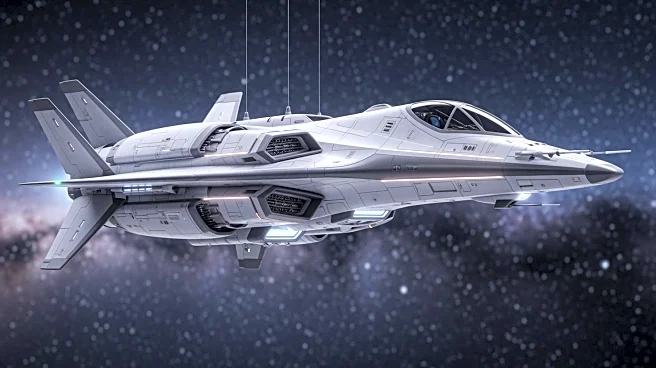What's Happening?
Japan has launched its next-generation cargo spacecraft, the HTV-X, to the International Space Station (ISS) for the first time. The HTV-X, developed by Mitsubishi Heavy Industries for the Japan Aerospace
Exploration Agency (JAXA), is set to replace the previous H-II Transfer Vehicle (HTV). This new spacecraft is designed to enhance Japan's contribution to ISS resupply operations with improved capabilities. The HTV-X is more compact than its predecessor but maintains the same payload capacity of approximately 6,000 kilograms to low Earth orbit. It features upgraded avionics, a streamlined structure, and a reconfigurable interior to support a wider range of cargo types. Notably, the HTV-X can remain operational in orbit for up to 1.5 years after detaching from the ISS, allowing for on-orbit experiments and technology demonstrations.
Why It's Important?
The launch of the HTV-X marks a significant advancement in Japan's space logistics capabilities. By joining the fleet of operational ISS cargo spacecraft, which includes Russia's Progress, Northrop Grumman's Cygnus, and SpaceX's Dragon, the HTV-X adds diversity to the ISS cargo rotation. This development underscores Japan's commitment to maintaining a reliable and independent resupply capability. The HTV-X's extended operational window and modular design make it a versatile asset for both government and commercial users, potentially supporting future low Earth orbit operations and NASA's Gateway station planned for lunar orbit. This adaptability aligns with international goals for sustained human activity in space, positioning Japan as a key player in the evolving space infrastructure landscape.
What's Next?
The HTV-X's successful launch sets the stage for its integration into regular ISS resupply missions. JAXA envisions the spacecraft playing a role in future space operations beyond the ISS, including potential contributions to NASA's Artemis program. The HTV-X's design allows for mission flexibility, making it suitable for a variety of space logistics applications. As international space agencies continue to develop plans for post-ISS infrastructure, the HTV-X could become a critical component in supporting sustained human presence in space. Stakeholders in the aerospace industry will likely monitor the HTV-X's performance closely, as its success could influence future collaborations and partnerships in space exploration.
Beyond the Headlines
The HTV-X's launch represents more than just a technological upgrade; it signifies a strategic move by Japan to enhance its role in global space exploration efforts. The spacecraft's ability to support on-orbit experiments and technology demonstrations could lead to advancements in aerospace technologies and foster innovation in space logistics. Additionally, the HTV-X's potential involvement in NASA's Gateway station highlights the growing importance of international collaboration in space exploration. As countries work together to achieve common goals, the HTV-X could serve as a model for future cooperative efforts in space infrastructure development.
